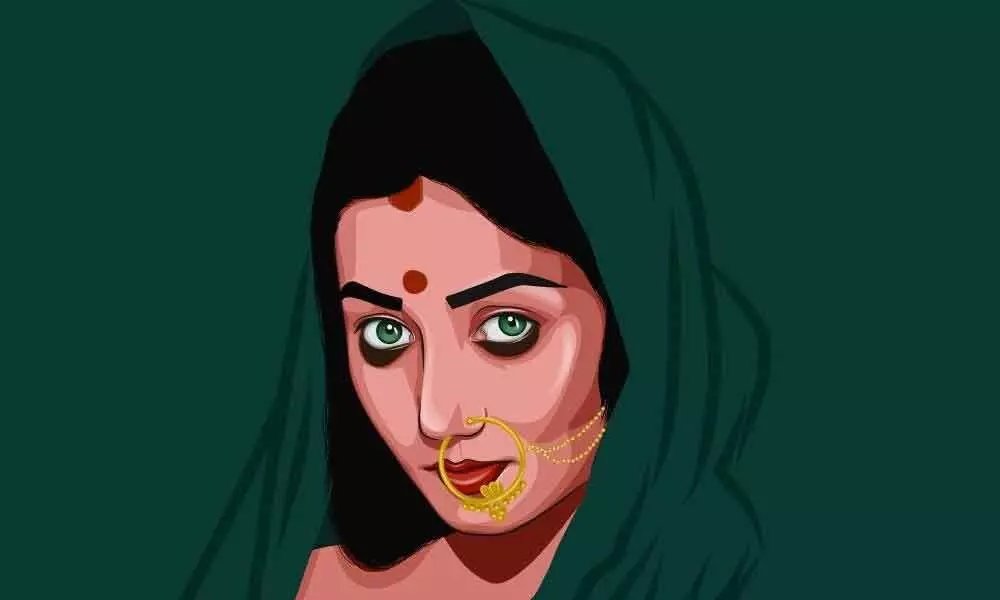Live
- J&K L-G felicitates Langar organisations & NGOs for contribution during Amarnath Yatra
- Hit by Covid, MP's Rakesh Mishra sees revival of his fortunes, courtesy PM SVANidhi scheme
- Trailblazing Yakshagana Artiste Leelavathi Baipaditthaya No More
- Cong in direct fight with BJP on 45-50 seats in Delhi Assembly election: Sandeep Dikshit
- Vijay Diwas: Assam Rifles organises Half Marathon in Tripura
- Delhi HC to hear on Monday plea against suppression of CAG reports by CM Atishi
- Collaboration, innovation, PPP key to achieve 2047 goals: Jitendra Singh
- Portraits of National Leaders to be Unveiled in Karnataka Assembly Hall
- Kejriwal's claims on vision for development ridiculous: Delhi BJP
- One nation, one election need of the hour: Mukhtar Abbas Naqvi
Just In

A Silent Scourge Of Indian Women
A Bench of Justices U U Lalit and S Ravindra Bhat of the Supreme Court has issued notices to the Union Ministries of Home Affairs, Women and Child Development and Information and Broadcasting on the issue of domestic violence and the inadequate systems to prevent the same.
A Bench of Justices U U Lalit and S Ravindra Bhat of the Supreme Court has issued notices to the Union Ministries of Home Affairs, Women and Child Development and Information and Broadcasting on the issue of domestic violence and the inadequate systems to prevent the same. The Bench said it would also issue notices to the State governments. A plea was filed by an NGO, We the Women of India, a citizen's network group comprising members from all walks of life, seeking adequate appointment and establishment of protection officers, service providers and shelter homes as provided for under the Central Acts. The plea stated "for the successful implementation and execution of the 2005 Act, it is necessary that the contact details of concerned 'Protection Officers' or the 'Service Providers' as well as the 'Shelter Homes' are made easily available and accessible to the aggrieved women for necessary and timely assistance."
This intervention comes at a time when not only domestic violence but also crimes against women and girl children are increasing by the day in the country. The phenomenon of violence against women within the family in India is complex and deeply embedded. Women are subject to violence not only from husbands but also from members of both the natal and the marital home. Girls and women in India are usually less privileged than boys in terms of their position in the family and society and in terms of access to material resources. Marriage continues to be regarded as essential for a girl; control over a woman's sexuality and its safe transfer into the hands of husbands who are assumed to "own" their wives is of primary importance. Systematic discrimination and neglect toward female children are evident in a declining sex ratio too. In 2020, the sex ratio of the total population in India was 108.18 males per 100 females. Nevertheless, there are regional and community variations. Women in the north have relatively less autonomy than their counterparts in the south, and experience fewer opportunities for control over economic resources.
A small segment of urban upper-class women enjoys some of the benefits of education, careers, and economic independence. Despite regional differences in women's status, there is much less variation in rates of domestic violence. Overall, domestic violence is prevalent in all settings, regions, and religious groups. Although there are some differences in reporting by region— women in the south report fewer beatings than their counterparts in the north — in-depth qualitative studies have found considerable under-reporting in the data. For example, it appears that only the most severely beaten women consider their problem worthy of mentioning in an interview or survey; others accept forms of beating and abuse as commonplace and do not report them. Research into the determining factors underlying the existence of domestic violence remains meagre but points repeatedly to a lack of women's autonomy as key.
Spousal disparity in educational attainment level or marital age, lack of autonomy within the home, dowry pressure, childhood abuse, unemployment, alcoholism, and poverty are all linked to high rates of domestic violence in India. Let us hope some good comes out of this litigation!

© 2024 Hyderabad Media House Limited/The Hans India. All rights reserved. Powered by hocalwire.com







